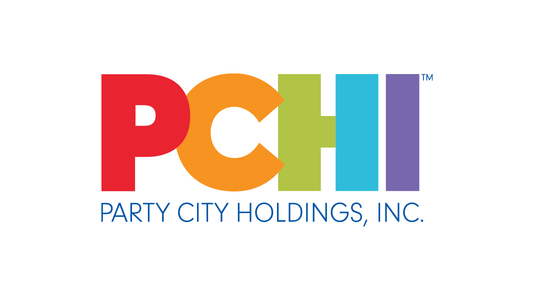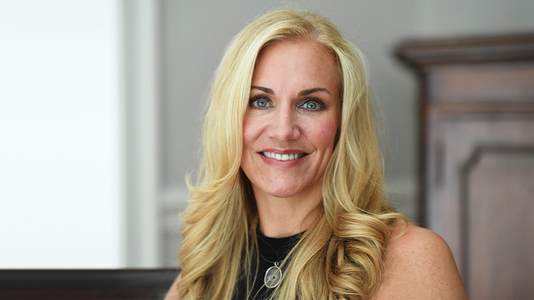

JULIE ROEHM
Chief Marketing and Experience Officer
Party City
CMO COUNCIL: Can you tell us a little bit about yourself and how you progressed to where you are today?
ROEHM: My story is from a path less taken. I have an undergraduate degree in environmental engineering from Purdue University and enrolled in a co-op program working every other semester. On completion, I was kind of bored, not because it was not challenging, but it just didn't pique my interest enough. What I enjoyed the most in my co-op experience was sitting in the business meetings where I was a contributor to the overall strategy discussions. I thought, "that's where my heart is," so I decided I needed to apply to business school.
During time in business school at the University of Chicago. I participated in a New Products Lab class working with American Airlines on a new product for frequent business flyers. This resulted in an internship at AA. After graduation, I joined Ford Motor Company in a strong quant position that wasn't necessarily the traditional marketer role. Given my engineering background, Ford felt right because it was an opportunity to be challenged quickly and learn a lot about a global, engineering-focused manufacturing company.
After seven years, I was recruited to Daimler Chrysler where I spent five years in different marketing positions on the Chrysler, Jeep and Dodge brands, ending up being the equivalent to the CMO in terms of role and title. After serving as global SVP at SAP for five years and CMO at an auto aftermarket company for two, I was recruited to Party City as CXO and CMO, where I have been for the past two years.
CMO COUNCIL: How has the Covid 19 pandemic impacted Party City’s supply chain, merchandising mix, sales volume and digital marketing and eCommerce mix on a local and national level? (Facts and stats would be helpful)
ROEHM: When it rains, it pours. Sadly, we were not immune to that either. So not only are party and pandemic not synonymous, but let's just pile on supply chain challenges as well. For most organizations Christmas year-end holidays are their busiest season. For us, it's Halloween.
Because of the timing of our season, we were able to get orders in early and this really saved us. Plus, we have an exceptional supply chain team, along with the ownership of Anagram, which is the world's largest producer of foil balloons, based in Minnesota. This vertical integration helped us considerably.
Our supply chain team was able to move quickly, charter vessels and expedite delivery of inventory that might otherwise have been delayed. We had to compete with all the retailers who were doing the same, but had we not had an earlier “big season”, we might have been caught shorthanded.
CMO COUNCIL: Can you speak to how you've been pivoting around the pandemic and still delivering a customer-centric experience at Party City throughout it all?
ROEHM: I started at Party City two months before the Covid pandemic hit. Many retailers took the position of “let's just try to ride this out” because nobody knew what this would entail. For us, though, we decided to push forward. Even though, like many others, we ended up shutting down all 850-plus retail locations for a period of time in 2020 leaving the website as only commerce channel.
The situation required us to truly deliver on our brand promise: “Make Joy Easy.” It underscored what we're here to do 100% whether we're you’re in wholesaling, manufacturing, retailing, it doesn't matter. When you look at what happened during the pandemic, not only was joy not easy to find, but it was also just more needed than ever before. Joy is such an essential part of the human experience.
Despite the pandemic, you can't stop birthdays and anniversaries rolling around, or babies being born, or milestones of any sort from happening. It was a need to be able to figure out a way to let people celebrate safely.
One of the stories I like to tell is how we figured out a way to get product to people quickly and safely in the heart of the pandemic. We previously had no curbside pick-up nor a home delivery program. April 2020 we decided it was imperative to implement a delivery program. With my auto network, I called contacts at Hertz to see if they could help us deliver some joy by partnering on home delivery, especially given that no one was renting cars or traveling at that time.
Eight days later, we were making our first delivery. It was down and dirty, it wasn't fully automated, it wasn't high-tech, but it got the job done. At the end of the day, we wanted to “fail fast forward” knowing that it wasn't going to be perfect, trying to communicate to our customers that it's not perfect but that we're trying to do our best, and that we will get better every single day. We leaned into it and started to do it and now it's a massive revenue stream for us. They say, "necessity is the mother of invention" and I think that was certainly the case for us with the pandemic.
Related: Next Gen Events: Optimized for Outcomes
CMO COUNCIL: What is the outlook and expectation for America’s event hosting, party planning, and seasonal celebratory appetite in 2022?
ROEHM: What we've seen over the last two years is a real shrinkage in the size of parties. Even in the lulls, they weren't as big and lavish as they had been pre-pandemic. What you see when things loosen up is people feel more comfortable having that larger gathering. You can see that by the size of the basket they create, the number of plates and cups they order, and the size of the balloon bouquets.
Not only are we starting to see larger parties. We're also seeing an increase in smaller at-home celebrations that are likely to continue. We're going to see that especially through the summer with backyard and outdoor barbecues.
We've all been wildly casual over the last two years. So that casualness has ebbed into the feeling that people don't have to put on some sort of extravagant, perfect, what I'd call, “a Martha Stewart-esque” celebration in their home to be able to create a memorable celebration.
People have loosened up. So that's why I do think that there's a greater comfort in slightly larger parties. What we've certainly seen and what I think is going to continue is this outdoor decorating trend and the explosive growth of balloon decor. I challenge you to walk into a room and either see a bunch of balloons or to be handed a balloon and not smile.
CMO COUNCIL: Can you share what kind of data you're capturing on your consumers, and how you're using that to remain agile and personalize the shopping experience?
ROEHM: Being agile is the name of the game. We are all living in a new world, clearly, with not only the pandemic, but with what's happening with third-party data. Understanding what our customers want and need is essential. And I think that we've got an opportunity to be slightly different from other retailers. Because when you look at a celebration, it’s so multi-faceted, it's different than buying a bag of groceries or a sweater or a pair of shoes.
A celebration has so many components, and it's so personal. What you want at a baby shower or at a gender reveal party versus what somebody else wants, is going to be wildly different depending on the individual. We are working to serve our customers, not only through the solutions and products we offer, but via the party panning services we now provide for free. Through Party City you can talk or chat one-on-one with a party planner. We'll help you navigate and put together your party look. We are adding self-help digital tools. For example, we released for New Year's Eve and Valentine’s Day a patent pending Balloon Builder. You can now see what a balloon bouquet looks like in a virtual environment, before buying, versus trying to envision one by compiling a random set of balloon sku’s together.
Those are the kinds of things that we're doing to allow people to have their own unique experience. By creating these opportunities to make it easy again for people to host full celebrations, and to understand more about those customers individually and within cohorts.
As you start to break down the customer cohorts, you can really understand what it is they're looking for, where the friction points are in the process when they shop, and what would likely motivate them to shop more frequently. You can also analyze what cohorts have in common, and then, individually, what's unique which then allows us to create very personalized content for them year after year.
Those are the kinds of things that we're doing to be much more relevant, helpful and worthwhile for our customers. Our method behind the data we capture is: What can we do in assisting our customer? What can we do that's really growing the customer base and growing our commitment to that customized party solution orientation and value proposition? What can we do to consistently make Joy easier?
That is really what we're all about. And it's been working. Our digitally enabled sales, which omnichannel is a part of, grew by 36% when we compare it to 2019. And digital sales that we were able to fulfill inside the retail store - so that's the big omni component - grew by 233%. Omni-channel is certainly the future, and I don't think anybody would be shocked by that insight.
